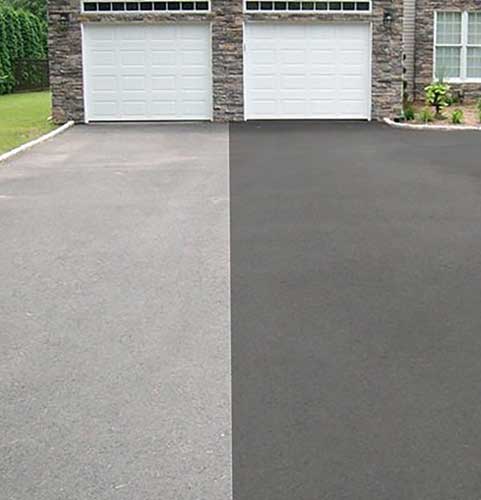Warm Mix Asphalt: A Lasting Option for Pavement
Warm Mix Asphalt (HMA) has emerged as a leading sustainable option for pavement services, supplying a myriad of environmental advantages and cutting-edge innovations. Its capability to reduce and reuse materials power intake provides an engaging instance for its fostering in road building jobs. The lasting performance and resilience of HMA make it a preferred choice for infrastructure growth. As the demand for eco-friendly construction techniques grows, discovering the nuances of HMA's sustainability can provide useful understandings right into the future of pavement services.
Environmental Advantages of Hot Mix Asphalt

Moreover, Warm Mix Asphalt helps to alleviate metropolitan warmth island effects. Its dark color takes in sunshine, decreasing the amount of heat reflected back into the ambience compared to lighter-colored pavements. This can decrease ambient temperature levels in urban areas, reducing the need for cooling and inevitably minimizing energy intake.
In addition, Hot Mix Asphalt adds to improved stormwater administration. Its porous nature enables water to infiltrate the sidewalk and reenergize groundwater supplies, reducing drainage and the threat of flooding. These environmental benefits make Warm Mix Asphalt a lasting choice for paving highways and roads.
Power Performance in HMA Production
Is energy performance a crucial consider the manufacturing of Warm Mix Asphalt (HMA)? Definitely. Energy plays a substantial function in the manufacturing of HMA, affecting both price and ecological sustainability. One essential element of power efficiency in HMA production is making use of warm mix asphalt (WMA) innovations (regrading). WMA enables the mixing and placement of asphalt at lower temperature levels compared to traditional warm mix asphalt, resulting in minimized energy consumption during manufacturing. This procedure not just reduces gas usage however likewise decreases greenhouse gas discharges, making it an extra eco-friendly choice.
Furthermore, innovations in plant technologies have led to more energy-efficient HMA manufacturing procedures. By enhancing energy use in HMA production, the industry can minimize its carbon footprint while keeping top quality pavement materials.
Recyclability of Hot Mix Asphalt
The recyclability of Hot Mix Asphalt (HMA) is a crucial element of its sustainability and lasting ecological influence. HMA is just one of the most recycled materials in the USA, with over 100 million bunches of recovered asphalt pavement (RAP) being reused each year in brand-new sidewalk building and construction. Reusing HMA supplies several environmental advantages, such as decreasing the requirement for virgin materials, reducing power usage during production, and lowering the quantity of waste sent out to garbage dumps.
The process of reusing HMA includes milling the existing pavement, crushing it right into smaller pieces, and blending it with brand-new aggregate and asphalt binder to develop a recycled mix. Overall, the recyclability of HMA plays a substantial role in advertising sustainable practices within the pavement industry.

Long-Term Performance of HMA
Asphalt pavements demonstrate resilience and resilience over a prolonged duration, mirroring the long-lasting performance of Hot look what i found Mix Asphalt (HMA) Additionally, improvements in HMA innovation, such as the usage of polymer-modified binders and warm mix asphalt, have actually additionally enhanced the sturdiness and longevity of HMA pavements. By prioritizing top quality building and construction and upkeep practices, HMA proceeds to show itself as a sustainable and economical service for resilient pavement infrastructure.

HMA: Resilience and Sustainability
Showing both resilience and sustainability, Hot Mix Asphalt (HMA) has actually become a cornerstone in the building and construction of long-lasting sidewalk facilities - commercial parking lot paving. HMA's toughness comes from its capability to endure heavy loads, extreme weather, and high traffic volumes, making it a dependable option for roads, highways, and flight terminal runways. The structure of HMA, which usually consists of aggregates, binder, and filler, plays an important function in improving its long life and resistance to tear and put on
In addition, HMA's sustainability hinges on its recyclability and energy-efficient production process. The capacity to recycle redeemed asphalt sidewalk (RAP) in new HMA combinations decreases the demand for virgin materials and decreases the environmental impact regrading of pavement building and construction and maintenance. In addition, the power efficiency of creating HMA lies in its reduced mixing temperatures contrasted to various other sidewalk materials, bring about decreased energy intake and greenhouse gas exhausts.
Verdict
Finally, hot mix asphalt (HMA) offers a sustainable service for pavement with its eco-friendly attributes. HMA's recyclability, energy effectiveness in production, and lasting resilience make it an environment-friendly selection for roadway construction. By conserving natural deposits, lowering waste, and decreasing greenhouse gas exhausts, HMA plays a vital role in advertising sustainability in facilities growth. Its capacity to alleviate city heat island impacts additionally emphasizes its relevance in developing eco aware and durable pavement systems.
HMA is one of the most recycled materials in the United States, with over 100 million loads of recovered asphalt pavement (RAP) being reused every year in brand-new sidewalk construction.The process of recycling HMA includes crushing the existing sidewalk, squashing it right into smaller items, and blending it with brand-new aggregate and asphalt binder to develop a recycled mix.Asphalt pavements demonstrate resilience and durability over an extensive period, showing the long-lasting performance of Warm Mix Asphalt (HMA) Additionally, innovations in HMA technology, such as the usage of polymer-modified binders and cozy mix asphalt, have further boosted the durability and durability of HMA pavements. The capability to reuse recovered asphalt pavement (RAP) in check my site new HMA mixes reduces the need for virgin products and minimizes the ecological impact of pavement building and construction and upkeep.